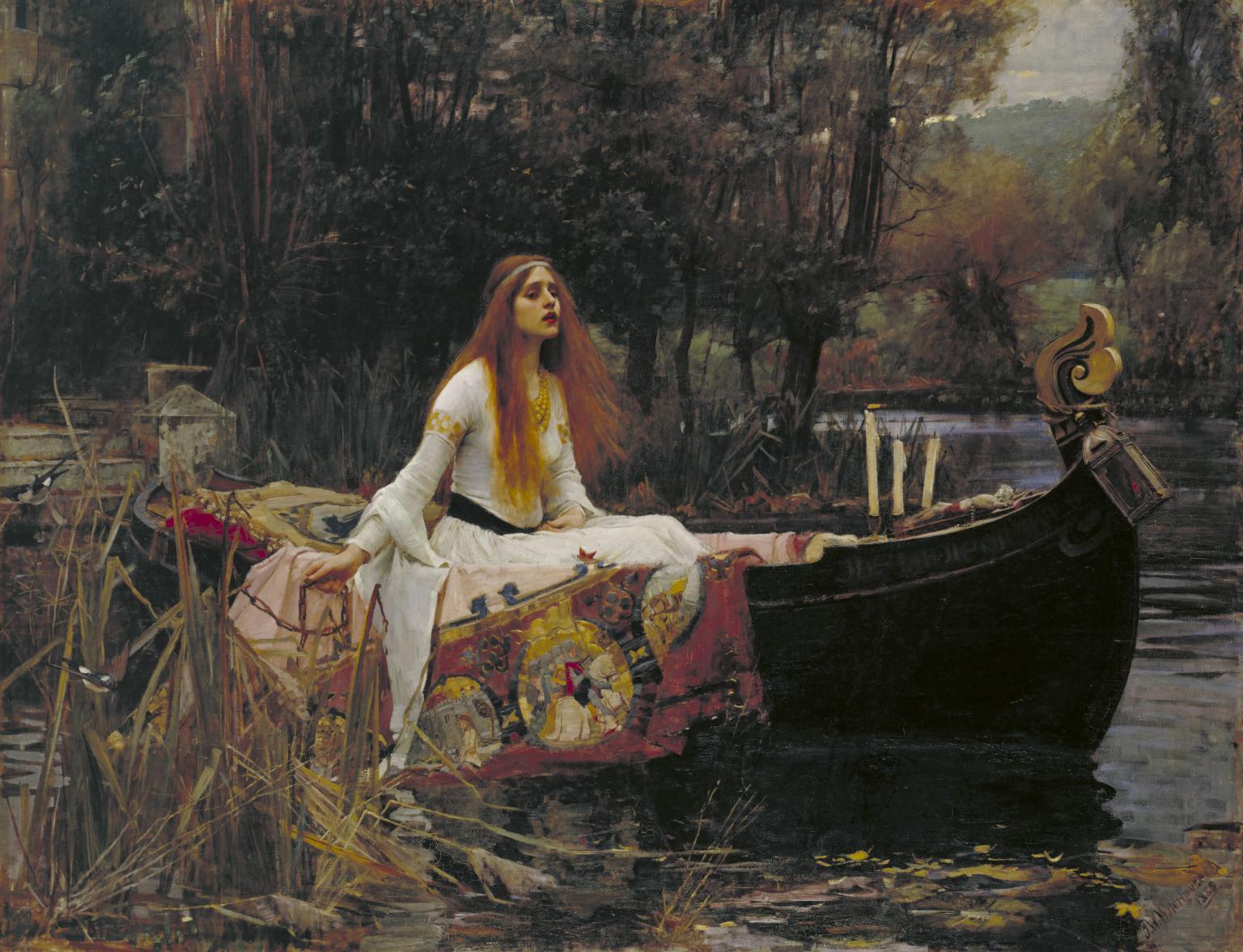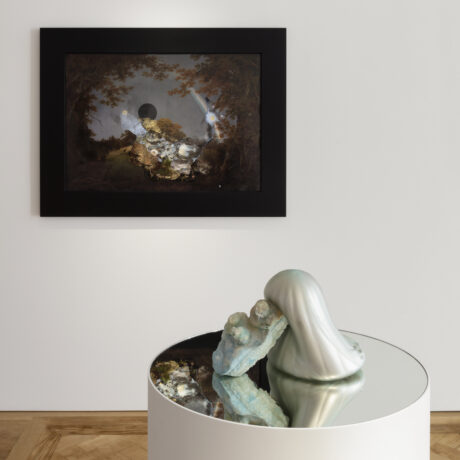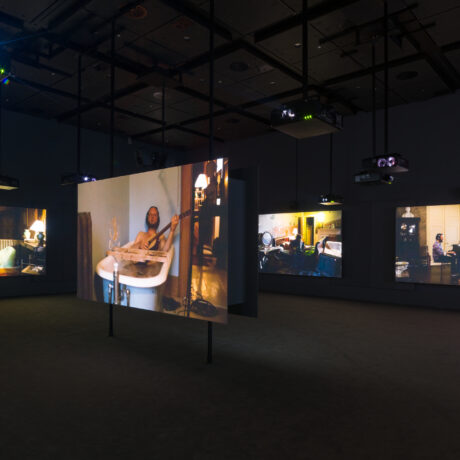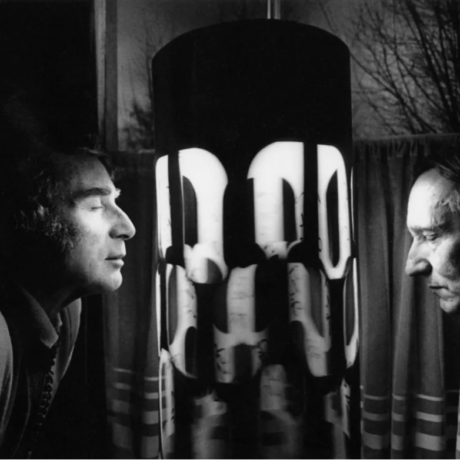
Elephant and Artsy have come together to present This Artwork Changed My Life, a creative collaboration that shares the stories of life-changing encounters with art. A new piece will be published every two weeks on both Elephant and Artsy. Together, our publications want to celebrate the personal and transformative power of art.
The Lady of Shalott by John William Waterhouse
is my earliest memory of a painting. I must have been about ten years old when I discovered it. I remember how our schoolteacher made us study the painting, and the 1832 poem by Alfred Lord Tennyson on which it is based, and then we had to paint our own versions. The task pushed me to really pay attention to a painting for the first time in my life.
When you are a child, your days are filled with stories, fairytales and magical illustrations that set your imagination free. Your life experience has just begun, and stories and pictures form such a vital way in which we connect with, and try to make sense of, the outside world. Yet I was somehow grounded in the knowledge that stories and pictures were not actually real life, and could never quite suspend my disbelief. However wrapped up I got in a particular story and its illustrations, I always knew that it was just a story.
But the image of the Lady of Shalott in the boat and the story it told, as painted by Waterhouse, felt different to me and my young mind. I was creative as a child, listening to and playing a lot of music, and experimenting with fashion and crafts. I grew up in central London and would visit museums and galleries frequently. I can’t recall any strong memories of other paintings, but I remember the first time I saw the painting of the Lady of Shalott. There was something so vividly honest and emotive about her expression, so real and raw, that it drew me in. My thoughts were fixated on how this woman came to find herself caught between death and desperation; trapped either way by her fate and the tragedy of love. This painting made me realise that something can be beautiful and sad at the same time, and that perhaps the sadness makes the beauty even more poignant.
“Now, when I look at the painting, the Lady of Shalott symbolises all women everywhere, and through all of time”
The painting got inside my head. I couldn’t stop thinking about it and the story of the lady. Although the painting was inspired by Tennyson’s poem, the image is able to tell its own story alone. The image of the lady in the boat triggered a profound sense of wonder in me, and I was left with many questions unanswered about her story. What was really happening to her?
The narrative contained within the poem just wasn’t enough for me. It tells the story of a woman imprisoned in a tower down the river from Camelot; not daring to look upon reality, she views the outside world only through its reflection in a mirror. One day, she glimpses the reflection of knight Lancelot and cannot resist looking at him directly. The mirror shatters, and she is doomed to drift in a boat downstream; she dies before she reaches her destination. When I first read the poem and saw the painting, I kept wondering, “But why?” It is a question that I still ask myself.
I keep coming back to the Lady of Shalott, and as I’ve grown older the painting has taken on different meanings. It’s a painting which speaks to you in different ways, depending on where you are in your life. Growing up in London, it’s easy to take things for granted. I don’t think I ever paid much attention to being female and what that really means. I have since become much more conscious of it. Having worked with women’s rights lawyers in South Africa, and spending more time in Pakistan (where my family is from) as an adult, has really put things into perspective when it comes to thinking about the disparity in rights, freedoms and opportunities that women and girls face around the world.
And it’s not only about the experiences I’ve had in foreign countries. Just trying to navigate my own life as an Asian female in the UK music industry comes with its own set of obstacles. Now, when I look at the painting, the Lady of Shalott symbolises all women everywhere, and through all of time. She embodies strength, resolve, determination, true passion. She reminds us how some things are beyond our control, no matter what we do or how we feel, or how pure and earnest our intentions may be. She is dealing with the fate of being a woman.
Waterhouse is saying something deeper, rather than just offering a visual depiction of Tennyson’s poem, with his painting,. He is going beyond and speaking about the position and struggle of all women. He evokes all the obstacles that a woman may face, and the female spirit of determination and the inherent beauty within that. Yet the feeling remains ominous. A gentle wind blows the Lady of Shalott towards her fate, toying with the final flicker of her candle. The sun fades behind the hills in the distance and you get the sense that something is coming to an end—a premature, unjust end.
For me, the painting is asking, “What does it mean to be a woman?” The chain she holds in one hand is a reminder of her imprisonment at the hands of fate and tragic love. Her other hand rests in her lap, pointing upwards towards her belly, reminding us of her femininity. Is it another chain by which she is bound? It is never a man who is stuck in a tower in these stories of medieval origin, waiting for a woman to come and rescue him, or to tempt him to his fate with her beautiful looks. And why not? Why is it always a damsel in distress or a princess longing for her prince, and not the other way around?
“Why is it always a damsel in distress or a princess longing for her prince, and not the other way around?”
There is an interesting juxtaposition between the hyperreality of the embroidered textile depicted on the boat and the realistic depiction of the nature setting. The Lady of Shalott herself seems more in line with the vivid scheme of the imagery shown on the tapestry: it gives her an otherworldliness. Yet when I look at her, I connect with her humanity. I try to empathise with her raw emotion, and it is this deep and unending empathy that turns the painting into a kind of mirror.
The longer I look at it, the more I seem to connect with myself, and I think about my position as a female in the world I live in and how it has affected my experiences. Being a woman in this world is not easy, but it is a very powerful thing. I’ve only come to realise that recently in this journey we call life. Women are strong and that is why some men try to hold us back, or hold us down. I think J W Waterhouse had this realisation too, and this is why he depicted the Lady of Shalott in such a way.
The way that I look at this painting now, and the meanings which I glean from it, are distinctly different to the thoughts I had when studying it as a child. And I wonder what I’ll make of the painting in another ten or 20 years’ time. Will the painting take on yet another fresh meaning for me? I wonder if I’ll still be thinking about the struggle; if I manage to have a successful music career and reach my goals, will that influence my interpretation?
Waterhouse’s Lady of Shalott is the epitome of what a painting should be: a key to unlocking your thoughts and expanding your mind. I still find this painting just as thought provoking as I did when I first set eyes on it in the classroom. As I gaze at the forlorn expression on the Lady of Shalott’s face, I still wonder whether she knows that she is going to die. Either way, I’m glad that she decided to take the risk for her freedom.
Did an artwork change your life?
Artsy and Elephant are looking for new and experienced writers alike to share their own essays about one specific work of art that had a personal impact. If you’d like to contribute, send a 100-word synopsis of your story to pitches@elephant.art with the subject line “This Artwork Changed My Life.”





